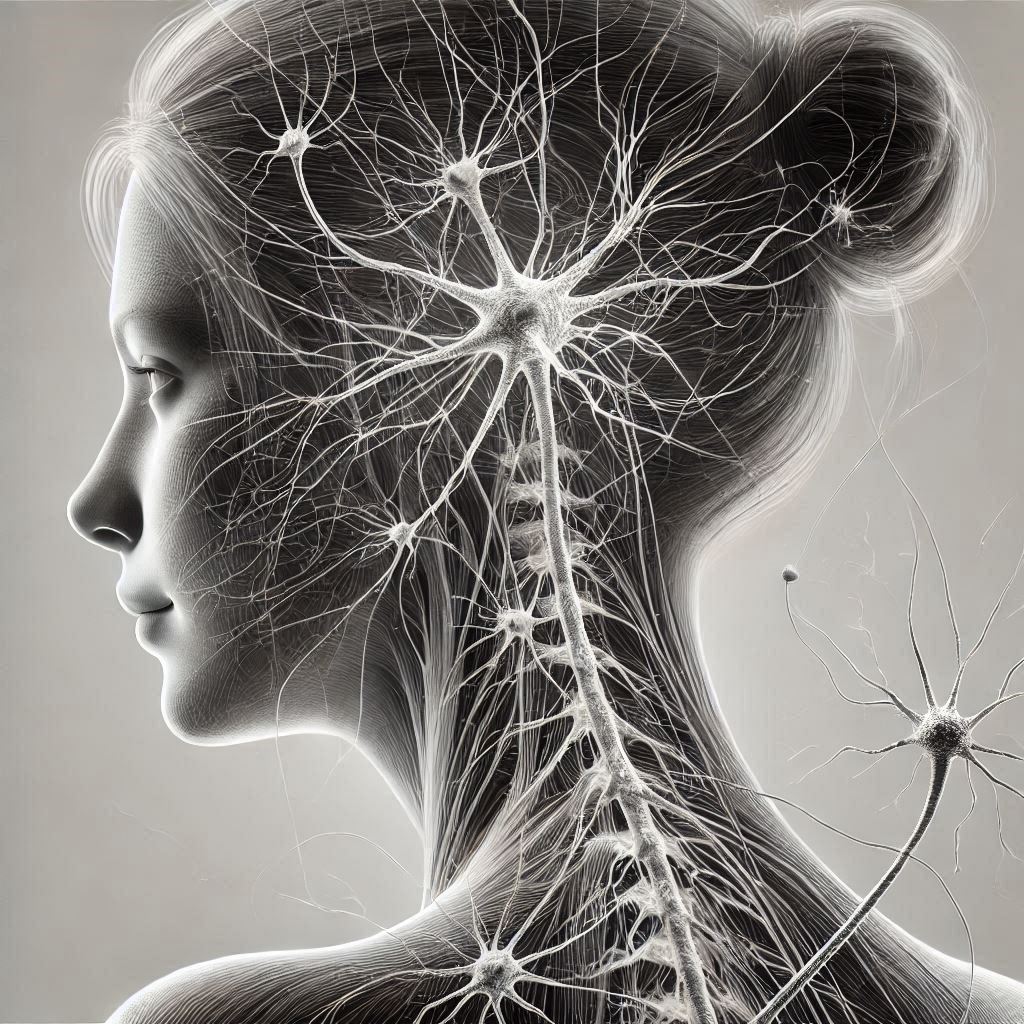“It felt like my heart was being squeezed in a vice, my breathing quickened, and a wave of fear I couldn’t explain washed over me.” If these sensations sound familiar, you may have experienced the onset of a panic attack. Recognizing the early signs of panic attacks isn’t just helpful—it’s crucial for managing and mitigating their impact. Panic attacks are increasingly common in our fast-paced society, affecting millions of people worldwide. However, understanding the symptoms and being prepared can significantly reduce their debilitating effects. In this guide, we’ll explore the key indicators to look out for so you can take control and find relief when panic strikes.
Understanding Panic Attacks
Panic attacks can be overwhelming and scary, but understanding them is a crucial step in managing their impact. This section will explore what panic attacks are, how they differ from other anxiety disorders, and their prevalence in society.
What is a Panic Attack?
A panic attack is a sudden episode of intense fear that triggers severe physical reactions when there is no real danger or apparent cause. It can be likened to a false alarm in your body, a response meant for true danger but set off by minimal triggers.
Characteristics of panic attacks can include:
- Racing heartbeat
- Shortness of breath
- Sweating
- Trembling or shaking
- A feeling of impending doom or danger
Unlike general anxiety, which can be chronic and more related to ongoing stressors, panic attacks tend to come on suddenly and intensely. Mayo Clinic highlights that panic attacks involve severe physical reactions which can feel incredibly distressing.
Panic attacks are often confused with anxiety attacks, but they differ in key ways. Anxiety is typically linked to a specific stressor and builds gradually, while panic attacks strike without warning and provoke a surge of anxiety that peaks rapidly.
The Prevalence of Panic Attacks
To understand how common panic attacks are, let’s delve into some key statistics. The Cleveland Clinic reports that about 2% to 3% of people in the U.S. will experience panic disorder in their lifetime. Additionally, up to 11% of people in the U.S. will have a panic attack in any given year.
Interestingly, certain groups are more likely to experience panic attacks. For example:
- Women are more prone to panic attacks than men.
- Younger adults and adolescents often have higher rates of panic attacks.
- Individuals with family histories of panic disorder can be more susceptible.
For a more global perspective, the World Health Organization states that anxiety disorders, which include panic attacks, affect about 4% of the global population at any given time. This underscores the importance of recognizing and addressing panic attack symptoms early on.
Understanding these factors can help normalize the experience and encourage those affected to seek help. If you suspect you or someone you know is experiencing panic attacks, remember that you are not alone and there are resources and treatments available to help manage and reduce the symptoms.
Common Early Signs of Panic Attacks
Understanding the early signs of panic attacks can empower you to take action before they escalate. Let’s explore these signs in two significant categories: physical and emotional/cognitive symptoms.
Physical Symptoms
When a panic attack begins, your body often reacts physically in ways that might seem alarming:
- Rapid Heart Rate: Your heart might start to pound or race, even if you’re not aware of why.
- Sweating: You might notice sudden sweating, as if you were under extreme stress or exertion.
- Trembling or Shaking: Your hands, legs, or entire body could start to shake uncontrollably.
- Shortness of Breath: You may find it hard to breathe, as if your chest is tight or there’s not enough air.
These symptoms can mimic those of a heart attack, which is why they can be incredibly frightening. According to the Mayo Clinic, these physical responses are part of the body’s acute stress reaction.
Emotional and Cognitive Symptoms
Panic attacks don’t just affect your body; they also dramatically impact your emotions and thoughts:
- Sense of Impending Doom: You might feel like something terrible is about to happen, even if there’s no real danger.
- Fear of Losing Control: Often, there’s a fear of losing control over your actions or surroundings.
- Feelings of Unreality (Derealization): The world around you might seem unreal or dream-like. This can be disconcerting and confusing.
The National Institute of Mental Health explains that these emotional and cognitive symptoms are just as distressing as the physical ones, contributing to the overall intensity of the panic attack experience.
Recognizing these signs early can help you manage panic attacks more effectively. Trust your feelings and symptoms, and don’t hesitate to seek support if needed.
Why Early Recognition is Crucial
Recognizing the early signs of panic attacks can make all the difference. When you catch the symptoms before they escalate, you gain control and can employ strategies to manage your anxiety effectively. Ignoring or misunderstanding these signs, on the other hand, can lead to full-blown panic attacks that are much harder to quell.
Preventing Full-Blown Attacks
Early recognition is a key element in preventing a panic attack from reaching its peak. When you know what to look for, you can take immediate action to stabilize your symptoms. Here are a few strategies to help prevent a panic attack from escalating:
- Practice Deep Breathing: Controlled deep breathing can help reduce hyperventilation, which is a common symptom of panic attacks. By focusing on slow, steady breaths, you can calm your nervous system. Resources like Healthline provide detailed breathing exercises that can be quite effective.
- Use Grounding Techniques: These techniques help divert your mind from the rising panic to the present moment. Simple practices like focusing on physical sensations (e.g., touching a textured object) or repeating a comforting mantra can ground you in reality.
- Engage in Light Physical Activity: Sometimes, a short walk or gentle exercise can help alleviate the built-up tension in your body, allowing you to handle stress better. Medical News Today suggests methods like stretching or light jogging to help manage panic attack symptoms.
- Acknowledge the Symptoms: Recognizing and labeling your symptoms as part of a panic attack can reduce their power. Knowing what’s happening can make the experience less frightening and give you a sense of control, as noted by WebMD.
These strategies, when practiced regularly, can help nip a panic attack in the bud and empower you to manage your anxiety more effectively.
Seeking Professional Help
While self-help techniques are valuable, consulting with healthcare professionals is crucial for long-term management of panic attacks. Here’s why seeking professional help is essential:
- Accurate Diagnosis: Professional consultation ensures that you receive an accurate diagnosis. Panic attacks can sometimes mimic other health issues, such as heart problems. A doctor can rule out other conditions and confirm if what you’re experiencing is truly a panic attack, as outlined by the Mayo Clinic.
- Personalized Treatment Plans: Healthcare providers can develop a tailored treatment plan that addresses your specific needs. This may include therapy, medication, or a combination of both. Cognitive-behavioral therapy (CBT) is particularly effective in treating panic disorders, helping you understand and change thought patterns that trigger panic attacks.
- Support and Resources: Professionals offer support and can connect you with additional resources, such as support groups or specialized programs. These resources provide a network of care and reinforce that you are not alone in this journey. McLean Hospital emphasizes the importance of education and community support in managing panic disorders.
- Monitoring and Adjustment: Ongoing professional guidance allows for the monitoring and adjustment of your treatment plan as needed. This ensures that your strategy evolves and remains effective over time.
Recognizing panic attack symptoms early and seeking appropriate help can lead to a significant improvement in quality of life. By staying proactive and informed, you can manage your condition and live a fuller, more comfortable life.
Self-Help Strategies for Early Signs
Recognizing the early signs of panic attacks is crucial, but knowing how to manage these signs yourself can make a significant difference. By employing self-help strategies, you can take control and reduce the impact of a panic attack. Here are some effective methods you can use.
Breathing Techniques
When panic sets in, your breathing can become rapid and shallow, making you feel even more anxious. Specific breathing exercises can help calm both your body and mind.
- Deep Breathing: Sit or lie down in a comfortable position. Place one hand on your stomach and the other on your chest. Inhale deeply through your nose for a count of four, feeling your stomach rise. Hold your breath for a count of four, then exhale slowly through your mouth for a count of six. Repeat this process until you feel more relaxed.
- Box Breathing: This technique involves inhaling for four seconds, holding the breath for four seconds, exhaling for four seconds, and then pausing for another four seconds before repeating. This rhythmic pattern can help stabilize your breathing and calm your nerves.
Learning these techniques can provide immediate relief during the early stages of a panic attack. Medical News Today suggests exercises like these to manage symptoms effectively.
Mindfulness and Relaxation
Mindfulness and relaxation techniques are effective in curbing panic attacks. These practices help you stay grounded and present, making it easier to manage anxiety.
- Mindfulness Meditation: Find a quiet space and sit comfortably. Focus on your breath and gently bring your attention back to it whenever your mind wanders. This practice can help you stay in the present moment and reduce anxiety.
- Progressive Muscle Relaxation: Start by tensing and then slowly relaxing each muscle group, starting from your toes and working your way up to your head. This technique can help release physical tension linked to anxiety.
- Visualization: Picture a peaceful and calming place in your mind. Imagine the sights, sounds, and smells of this place, allowing yourself to feel as if you are actually there. This can distract your mind from panic and create a sense of calm.
Incorporating mindfulness and relaxation into your daily routine can fortify you against the onset of panic attacks. As noted by Mind UK, these practices are valuable tools in managing anxiety.
Physical Activity
Regular physical activity is crucial in managing stress and anxiety, which can help prevent panic attacks.
- Exercise: Engaging in regular physical exercise, like jogging, swimming, or even walking, helps in releasing endorphins, the body’s natural mood lifters.
- Yoga: Yoga combines physical postures, breathing exercises, and meditation. It’s an excellent way to reduce stress and improve overall well-being.
- Outdoor Activities: Spending time in nature, like hiking or cycling, can be incredibly soothing. The fresh air and change of scenery can help distract you from stressors and promote relaxation.
Making physical activity a regular part of your routine can provide long-term benefits for anxiety management and overall health. According to Healthline, incorporating physical activities can significantly reduce the frequency and intensity of panic attacks.
These self-help strategies can be life-changing when dealing with the early signs of panic attacks. Practicing them regularly can help you gain better control over your anxiety and improve your overall quality of life.
Supporting Someone Experiencing Panic Attacks
Supporting someone experiencing panic attacks requires sensitivity, understanding, and practical actions. Here’s how you can recognize the signs, provide immediate comfort, and offer long-term support to a loved one in distress.
Recognizing the Signs
Being able to recognize the signs of a panic attack is the first step in helping. Panic attacks can be intense, and knowing the symptoms allows you to respond effectively.
Common signs include:
- Rapid Heartbeat: The person’s heart might suddenly start to race.
- Shortness of Breath: They could have trouble breathing or feel like they’re choking.
- Sweating and Shaking: Look out for visible shaking or sweating, even if the room isn’t hot.
- Nausea or Dizziness: They might feel lightheaded or nauseous.
- Fear of Losing Control: They could express a fear of losing control or feel detached from reality.
Recognizing these symptoms can help you act quickly and appropriately. For further information on recognizing panic attack signs, check out Mind UK.
Providing Immediate Support
When someone’s having a panic attack, your immediate support can make a huge difference. Here are some practical ways to help them through it:
- Stay Calm: Your composure can help them feel safer.
- Offer Reassurance: Remind them that they are safe and that the attack will pass. Simple statements like, “I’m here with you” can be very comforting.
- Ask How to Help: Everyone is different. Ask if there’s something specific you can do to help, whether it’s bringing them water or giving them space.
- Encourage Slow Breathing: Lead them in breathing exercises. Have them inhale slowly through their nose, hold for a few seconds, and exhale gently through their mouth.
- Use Grounding Techniques: Encourage them to focus on their senses. Ask them to name five things they can see, four things they can feel, three things they can hear, two things they can smell, and one thing they can taste.
Healthline has more detailed tips on how to support someone during a panic attack.
Long-term Support Strategies
Long-term support is crucial for someone who experiences frequent panic attacks. Here are strategies you can use to provide ongoing assistance:
- Educate Yourself: Learn about panic attacks to better understand what your loved one is going through. Knowledge is empowering and helps you offer more meaningful support.
- Encourage Professional Help: Gently suggest that they seek professional help if they haven’t already. Therapy, particularly Cognitive Behavioral Therapy (CBT), is highly effective.
- Be Patient and Non-judgmental: Avoid judging or being critical. Instead, listen with empathy and validate their feelings.
- Create a Support Plan: Work with them to create a game plan for when a panic attack strikes. This could include having a list of grounding techniques, breathing exercises, or even a playlist of calming music.
- Promote Self-care Practices: Encourage them to engage in activities that reduce stress, like regular exercise, mindfulness practices, and hobbies they enjoy.
For more long-term support tips, Verywell Mind offers practical advice on sustaining your support over time.
Helping someone with panic attacks involves a balance of immediate interventions and ongoing support. By recognizing the signs and providing compassionate, informed assistance, you can make a significant positive impact on their well-being.
Conclusion
Recognizing the early signs of panic attacks is a vital step in managing them effectively. This guide has explored the key physical and emotional symptoms, the importance of early recognition, and strategies to mitigate their impact. By understanding these early signs, you empower yourself to take action before they escalate into full-blown attacks. Remember, seeking professional help is crucial for accurate diagnosis and tailored treatment.
Stay proactive about your mental health. The sooner you recognize and address these symptoms, the better equipped you’ll be to prevent panic attacks from controlling your life. Your mental well-being is important, and with the right knowledge and support, you can navigate through panic attacks with confidence and resilience.








